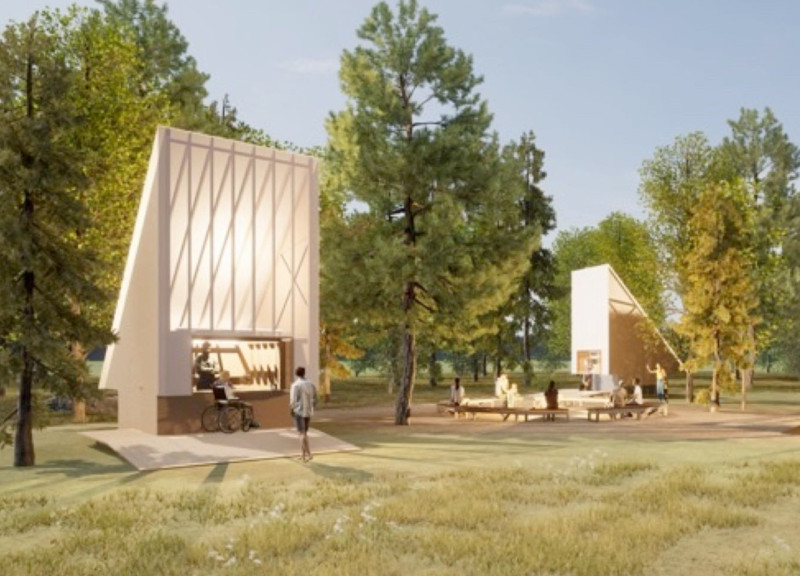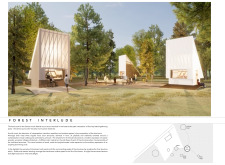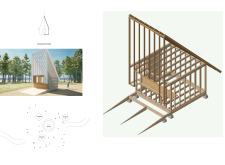5 key facts about this project
At its core, the project serves multiple functions, including a food court, sauna, and performance stages. Each element is carefully positioned to promote engagement while respecting the natural terrain and existing vegetation. The architectural layout features three angular structures arranged around a central communal area, creating a fluid circulation path that encourages movement and interaction. This configuration not only facilitates social gatherings but also enhances the overall festival experience by providing distinct areas for relaxation, nourishment, and cultural celebration.
The design incorporates a range of materials that resonate with the environmental context. Wood is extensively utilized throughout the project, emphasizing warmth and familiarity while reflecting local architectural traditions. This use of timber not only adds structural integrity but also enhances the aesthetic appeal of the built environment. Complementing the wood, metal elements are strategically integrated to provide durability and contemporary contrast. The inclusion of translucent polycarbonate panels in the roof design allows for an influx of natural light, creating dynamic interior spaces that fluctuate with the changing light throughout the day.
One of the project’s distinctive design approaches is its respectful relationship with the landscape. The structures are elevated on stilts, reducing their impact on the forest floor and allowing for the preservation of the ecosystem. This consideration furthers the project’s commitment to environmental sustainability, ensuring a minimal footprint while fostering an immersive experience of the surrounding nature. Roof angles have been intentionally designed to channel rainwater effectively, illustrating practical functionality while also contributing to the visual language of the architecture.
The project's architectural forms, characterized by their geometric abstraction, draw from vernacular influences that resonate with the regional context. The angular roofs create visual interest and echo the rhythm of the festival itself. The design embodies a sense of place, using local materials and forms to connect the built environment with the cultural narratives inherent to the community it serves. This consideration for cultural context is evident throughout the project, emphasizing not only the functional aspects but also the symbolic value of gathering spaces in communal life.
Beyond its architectural significance, this project embodies an essential bridge between people and nature. It fosters an inclusive atmosphere where community members can come together, share experiences, and celebrate cultural expressions. The careful delineation of spaces within the communal area creates opportunities for both individual contemplation and collective enjoyment, embodying the social fabric that festivals are renowned for.
For a deeper exploration of the project, including detailed architectural plans, sections, and design elements, readers are encouraged to delve further into this engaging presentation. The insights into architectural designs and ideas presented here offer a rich understanding of how this project not only meets functional needs but also embodies a thoughtful dialogue with the landscape and cultural heritage.
























